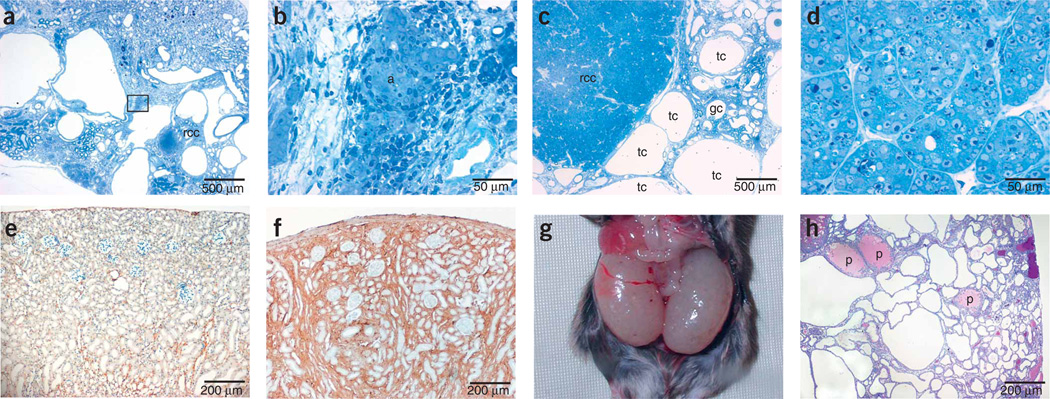Figure 5.
Renal disease models. (a–d) Histological analysis of polycystic kidneys showing different stages of malignant progression induced in Pax8-rtTA/tetO-MYC double-transgenic mice. Doxycycline was continuously administered to 3-month-old Pax8-rtTA/tetO-MYC double-transgenic mice over a period of 4 months. (a) Polycystic kidney with renal adenoma and renal cell carcinoma (rcc). (b) Renal adenoma (a) magnified from marked box in a. (c) Polycystic kidney with tubular (tc) and glomerular (gc) cysts and renal cell carcinoma. (d) Renal cell carcinoma cells magnified from c. (e,f) Renal fibrosis induced in Pax8-rtTA/tetO–Tgf-β1 double-transgenic mice. Pax8-rtTA/tetO–Tgf-β1 double-transgenic mice (3 months old) were treated for six consecutive cycles (2 d with doxycycline, 5 d without doxycycline). Overexpression of Tgf-β1 led to massive extracellular matrix accumulation and prominent renal fibrosis, as indicated here by collagen I immunohistochemistry in noninduced (e) or induced (f) mice. (g,h) Severe PKD induced in Pax8-rtTA–mediated, tetracycline-induced Tsc1-knockout mice. Pregnant Pax8-rtTA/LC-1/Tsc1flox/flox mice were treated with doxycycline from the first day of mating until delivery. After birth, doxycycline treatment was stopped. Giant polycystic kidneys developed in 3-week-old Pax8-rtTA/LC-1/Tsc1flox/flox offspring mice as shown in g. PAS staining in h revealed extensive cyst formation in all tubular segments and occasional protein deposits (p) caused by proteinuria.

